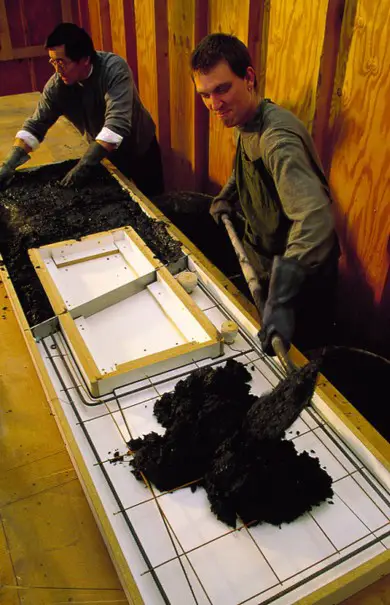 I once spoke to a homeowner in the middle of a major kitchen renovation and he happened to mention the price of his new solid-surface countertop. Until that moment I’d never seriously considered the possibility that someone might spend as much on a food preparation surface as I did on my four-wheel drive pick-up truck. But there’s at least one person who did. And as great as his countertop looks, I can’t help but wonder about value for the dollar.
I once spoke to a homeowner in the middle of a major kitchen renovation and he happened to mention the price of his new solid-surface countertop. Until that moment I’d never seriously considered the possibility that someone might spend as much on a food preparation surface as I did on my four-wheel drive pick-up truck. But there’s at least one person who did. And as great as his countertop looks, I can’t help but wonder about value for the dollar.
There’s No Shortage of Beautiful Countertop Options
The real trick is finding a beautiful, durable, rock-solid countertop at a price that costs less than it’s weight in platinum. And that’s why I like the do-it-yourself concrete countertop option. Although the process of building one is simple, there are key points you need to understand first for success.
Concrete
- Concrete is actually a poor name for the material involved because it’s not always the stuff that’s used.
- Concrete usually refers to a mixture of sand, crushed stone and Portland cement, with the stone being added as low-cost filler.
- The trouble is bits of stone can mar the finish of a countertop if they remain visible along the edges of the wooden forms that impart the countertop’s shape.
- Since you can’t see formed surfaces until the wood has been removed, crushed stone creates an unnecessary risk for beginners.
Masonry Mixture
- A better option, and the one widely employed in the trade, involves the use of a masonry mixture made of 1 part Portland cement with 3 parts sand.
- Strictly speaking this is mortar, not concrete, but since nobody ever talks about a mortar countertop, I won’t either.
- Just remember to make your mixture dry enough to hold together in a pile. Any wetter and your countertop won’t cure to full strength.
Perhaps the most challenging part of the concrete countertop equation is appearance. Who wants a countertop that looks like a sidewalk? And avoiding that fate requires two things:
- The addition of colour to the surface.
- The treatment of that surface to add depth to the colour and protect against stains.
Concrete Kitchen Countertop Colouring Options
You’ve got a couple of concrete colouring options to consider:
- The most common employs powdered pigments added to the water you’ll use to make the mortar. One Ontario-based source of pigment is Form and Build Supply (800-563-2285; www.formandbuild.com).
- Another concrete colouring option involves chemical treatments applied to the surface after it’s fully cured. This liquid isn’t a dye, but a compound that reacts with minerals in the concrete. The result is a colour that’s slightly mottled and much more like natural stone than surfaces coloured by dye. Kemiko (800-875-4596; www.kemiko.com) is a US supplier that ships to Canada.
Test Pads
The aesthetics of concrete countertop colouring and sealing are important enough that you should consider acquiring experience before tackling the real thing. That’s why test pads make so much sense. They allow you to proceed with the confidence of knowing exactly what your finished countertop will look like using a particular aesthetic strategy.
- Build three or four 2-inch deep x 12-inch x 12-inch test forms.
- Fill them with mortar mix to test your colour strategy.
- Be sure to apply both colour and sealer to these test panels, since full surface treatment is necessary to create a realistic impression of what you’re in for.
You should also take a look at a brand new book on the subject. Concrete Countertops by Fu-Tung Cheng (Taunton Press) is a compilation of the wisdom gained during more than 15 years in the craft. Besides the technical tips offered, you’ll be amazed at the stunning countertops that can be made with concrete.